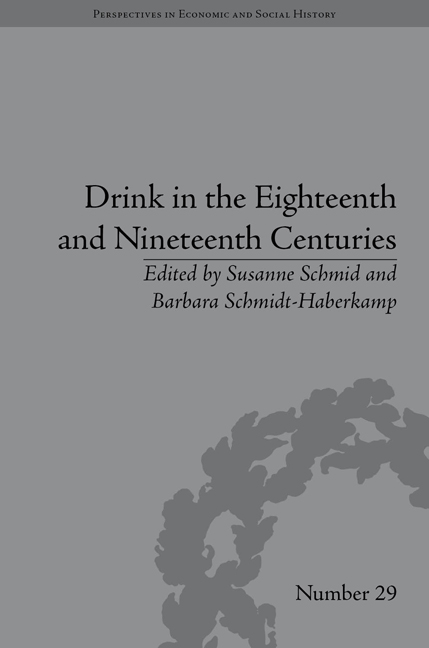Book contents
- Frontmatter
- CONTENTS
- Acknowledgements
- List of Contributors
- List of Figures and Tables
- Introduction
- Part I Ritual and Material Culture
- Part II Institutions and Social Class
- 3 Café or Coffeehouse? Transnational Histories of Coffee and Sociability
- 4 Claret at a Premium: Ned Ward, the True Tory Defender of Fine Wines?
- 5 Eighteenth-Century Travellers and the Country Inn
- 6 Drinking, Fighting and Working-Class Sociability in Nineteenth-Century Britain
- Part III Temperance and the Misery of Alcohol
- Part IV Intoxication and Therapy
- Part V Case Studies: Rum, Cocoa and Magical Potions
- Notes
- Index
6 - Drinking, Fighting and Working-Class Sociability in Nineteenth-Century Britain
from Part II - Institutions and Social Class
- Frontmatter
- CONTENTS
- Acknowledgements
- List of Contributors
- List of Figures and Tables
- Introduction
- Part I Ritual and Material Culture
- Part II Institutions and Social Class
- 3 Café or Coffeehouse? Transnational Histories of Coffee and Sociability
- 4 Claret at a Premium: Ned Ward, the True Tory Defender of Fine Wines?
- 5 Eighteenth-Century Travellers and the Country Inn
- 6 Drinking, Fighting and Working-Class Sociability in Nineteenth-Century Britain
- Part III Temperance and the Misery of Alcohol
- Part IV Intoxication and Therapy
- Part V Case Studies: Rum, Cocoa and Magical Potions
- Notes
- Index
Summary
Introduction
Although it has become ‘well established’ by researchers that alcohol ‘facilitates’ violence, the precise relationship between intoxication and aggression remains unclear. Since the late 1960s, some have emphasized cultural expectations rather than biochemical reactions. In 1969, Craig MacAndrew and Robert Edgerton argued that ‘the way people comport themselves when they are drunk’, including violent behaviour, ‘is determined not by alcohol's toxic assault upon the seat of moral judgment, conscience, or the like, but by what their society makes of and imparts to them concerning the state of drunkenness’. Their social-constructionist analysis of drunkenness as a ‘time out’ that allows one to ignore – within limits – behavioural norms was popular and has remained influential among anthropologically-minded alcohol researchers. However, alcohol's physical effects have become better understood, and the most promising perspectives on alcohol and aggression consider a combination of physiological, social and cultural factors. Here, I provide a historical perspective by examining alcohol and male fighting in nineteenth-century Britain. While there were other relevant contexts of violence, such as family abuse or rioting, male fighting was public, much commented-upon and often alcohol-related. A study of late nineteenth- and early twentieth-century English assault cases found that ‘men were twice as often (27 per cent) involved in conflicts where both parties were drunk than women (13 per cent)’. And, importantly, both fighting and drunkenness were becoming less tolerated in the nineteenth century.
- Type
- Chapter
- Information
- Drink in the Eighteenth and Nineteenth Centuries , pp. 71 - 80Publisher: Pickering & ChattoFirst published in: 2014



